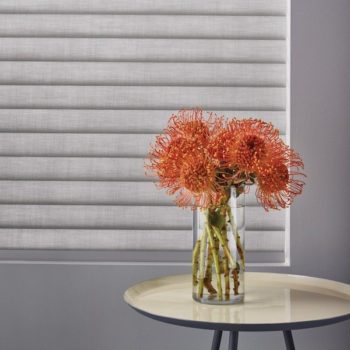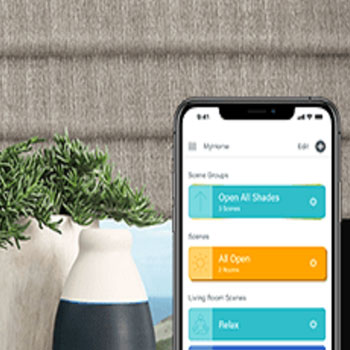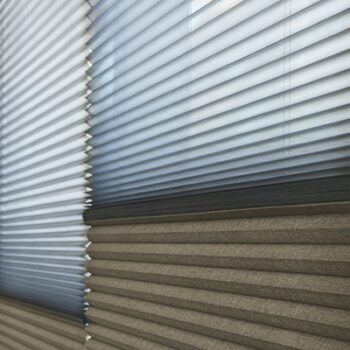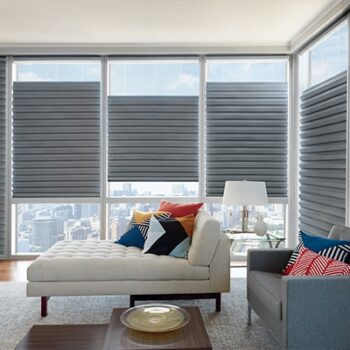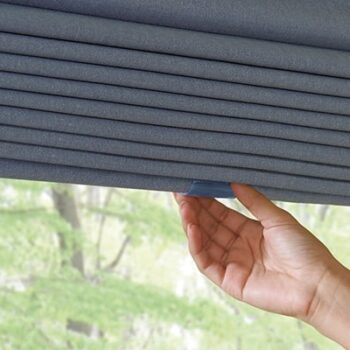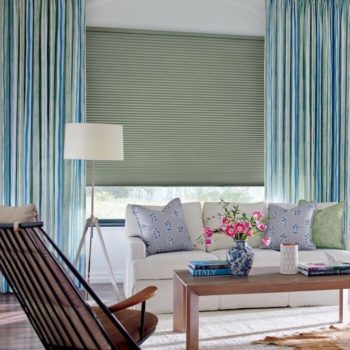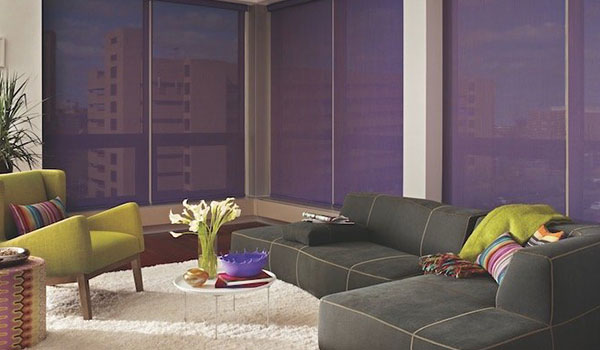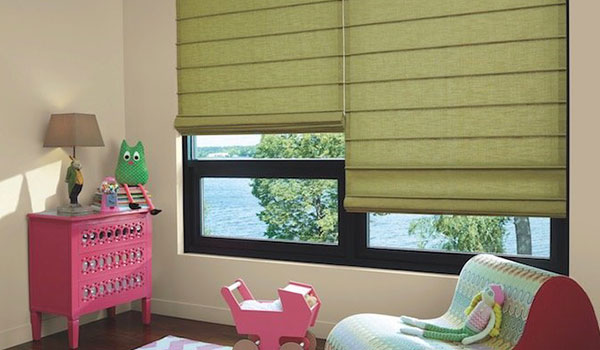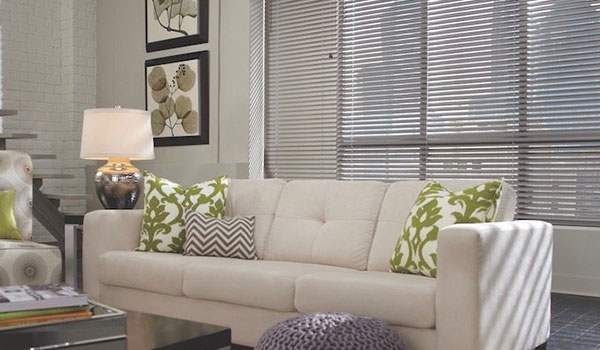Interior Design Stories
Browse all current and past decorating ideas from Beautiful Windows Blinds.
Interior Decorating with Curves
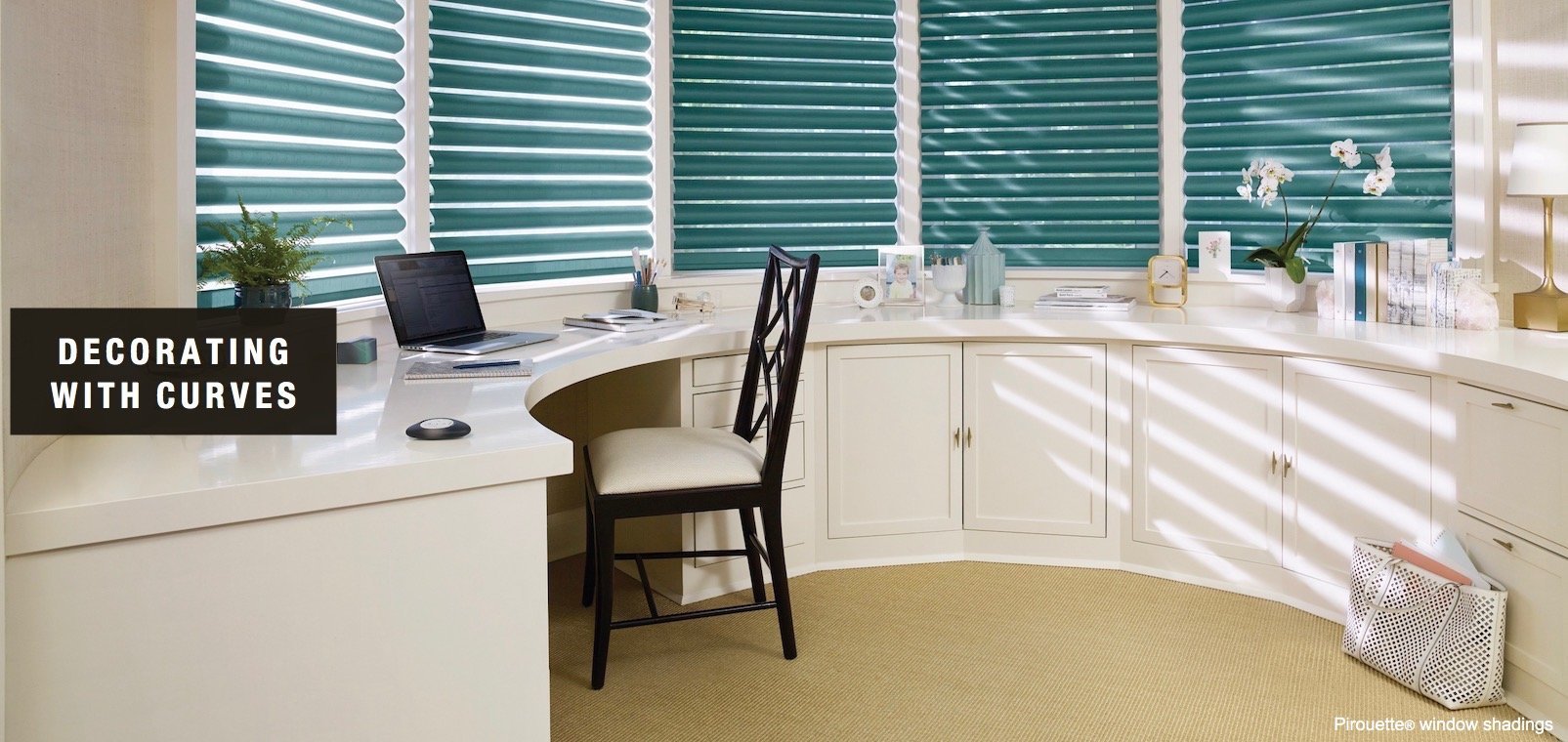
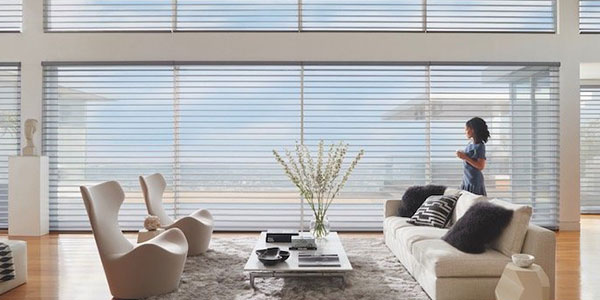
Soften your interior design with curves
Most home interiors have lots of straight lines and square – or almost square – corners. Hint: consider the shape of your tables, countertops, chairs, artwork, rugs and more.
Instead, why not think outside the box and add some curved design elements to your interior design plan?
Straight edges make a room seem clean and organized, but mixing in some curved contours can take away a feeling of austerity.
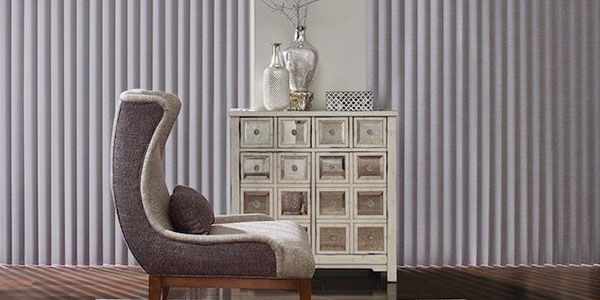
Consider all rounded shapes, such as circles, ovals, arcs, bows, ellipses, half moons and even helixes and amoeba profiles. These softer shapes will add a sense of flexibility, grace, joyfulness, and luxury to your home. And they add a natural, organic feel since many elements in nature have rounded edges.
Research even shows that we appreciate the look of curved surfaces. According to fastcodesign.com, people are far more likely to call a room beautiful when its design is round instead of square. Apparently, it’s hard-wired into our brains! And part of the reason we prefer curves is because they signal a feeling of safety.
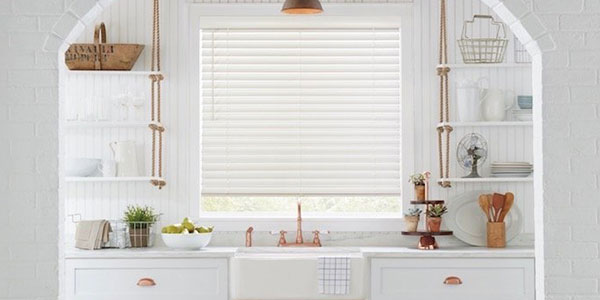
Many elements in your home lend themselves to curved edges, including:
– Tables
– Sofas and ottomans
– Chairs
– Mirrors and other wall art
– Rugs
– Tile patterns
– Outdoor decks, porches and walkways
– Stenciled patterns on walls and ceilings
– Even curved walls, vaulted ceilings, and arched doorways
Take a swerve this season and add some curved design elements to your home.
MOOD-INSPIRING CANDLES
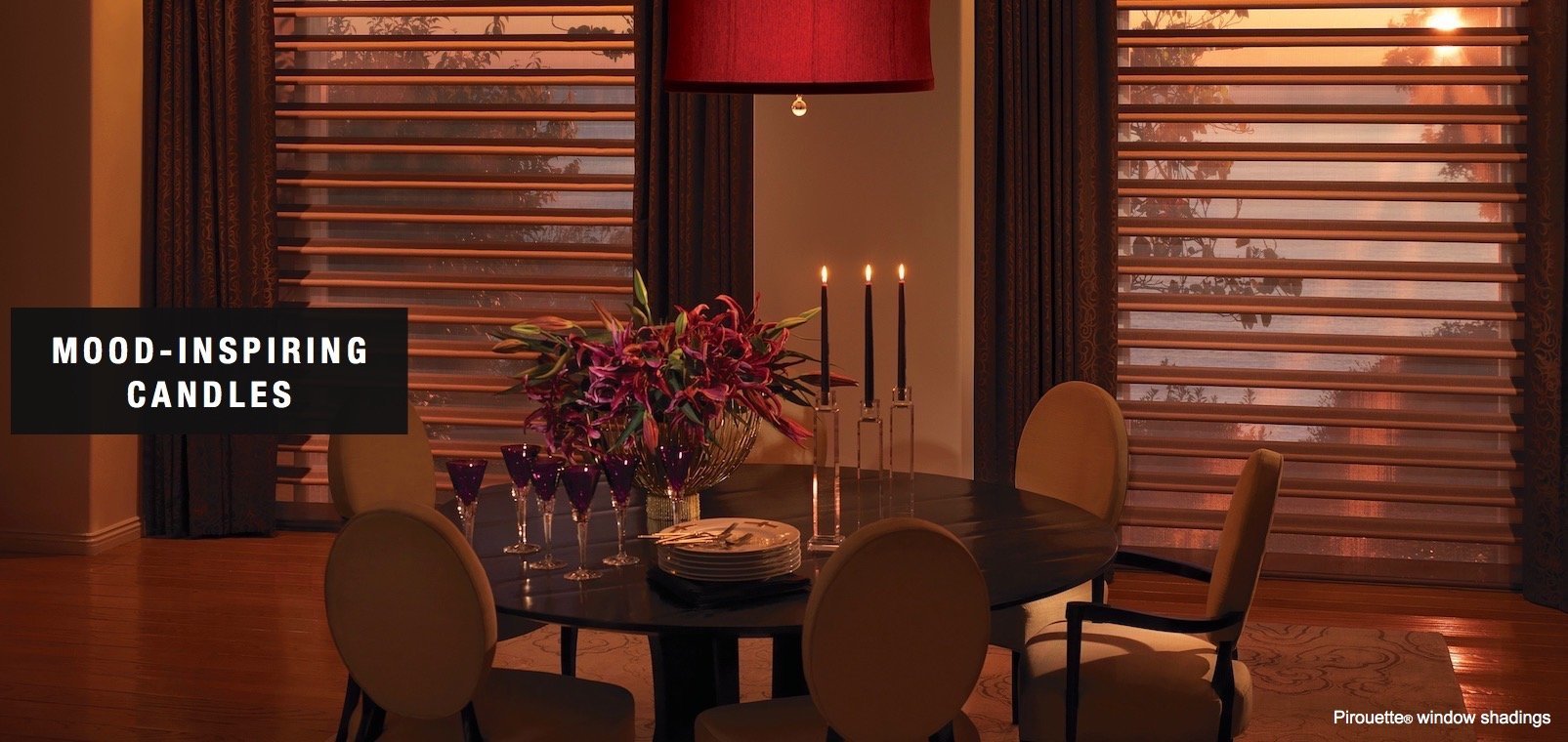
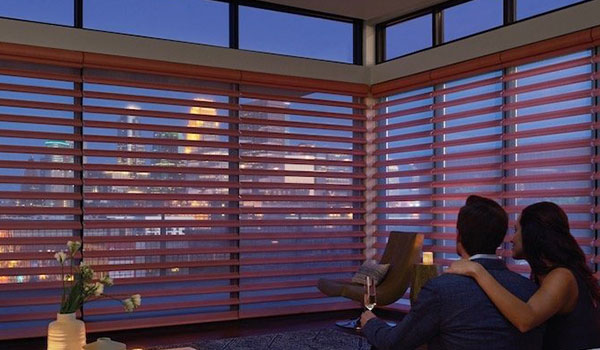
Light up your home with mood-inspiring candles.
Warm up the mood in your living environment by adding candles to your décor. They’re perfect for the cold winter months and continue to add beauty all year long.
Candles add soft light to a room and create a sense of serenity. Best of all, they add atmosphere and romance. Candles come in most any shape, size and color – from small votive candles to large, tall candles that can sit on the floor and become a focal point of a room.
Candles add interest to almost any room and can be displayed in many places in a room, including on:
– Dining tables
– Mantles
– Coffee tables and end tables
– Bathroom counters and around the bathtub
– Dressers and bureaus in the bedroom
– Window sills
– Shelves
– The inside of your fireplace in summer
Candles look especially nice when mixed with flowers, books, lanterns, or seashells to create an artistic vignette. It’s fun to update candles for holidays, too.
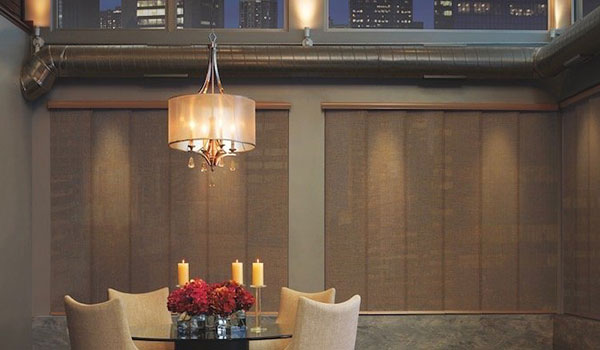

Think about using candles in pairs or even larger groups, with candles of differing sizes and shapes.
Always make safety a priority when you decorate with candles. Make sure, candles are at a distance from anything that could be flammable and that they sit on a heat-resistant surface. And be vigilant about putting them out before you leave the house or go to bed.
Lighten and brighten your home environment by adding beautiful candles this season.
Brass is Back
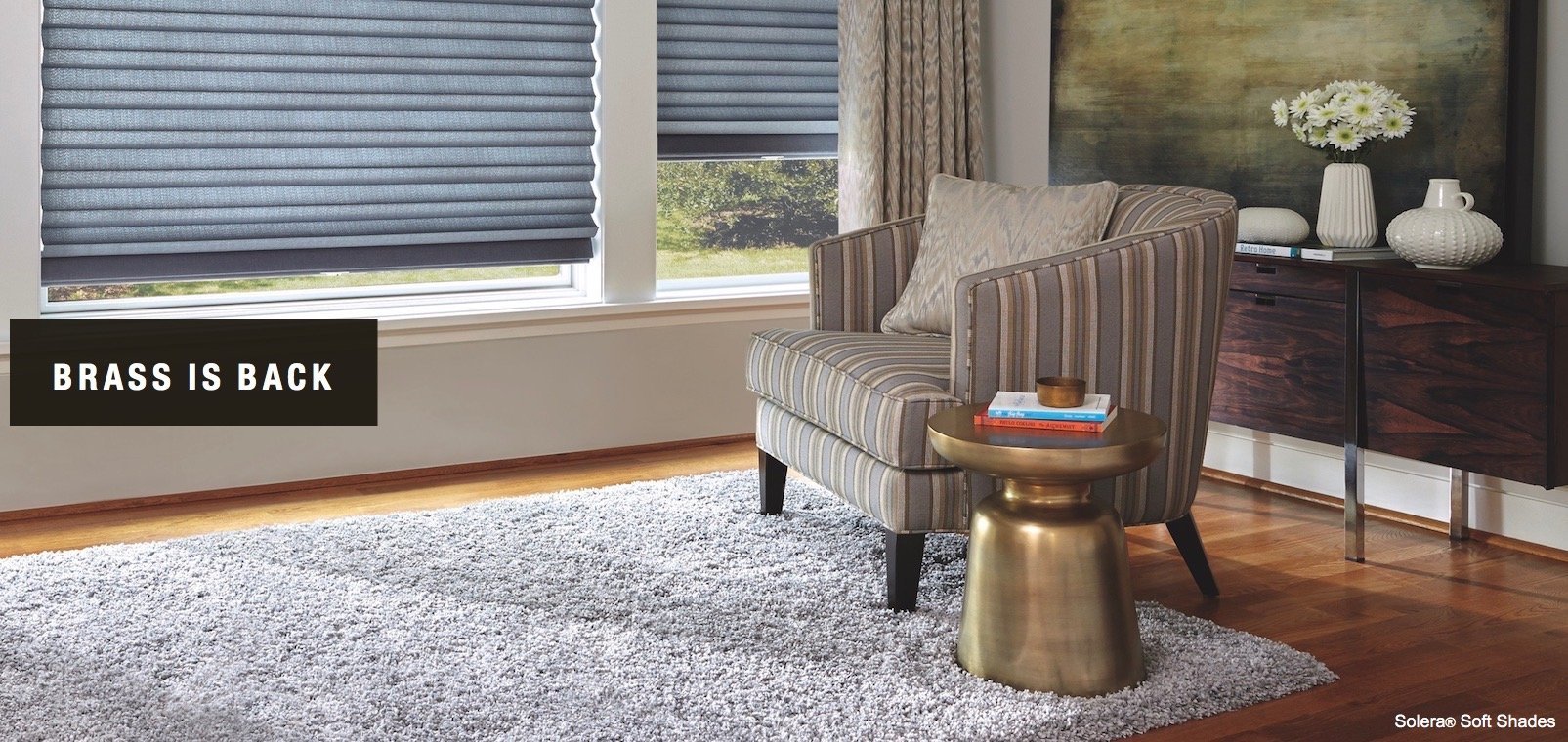
Add warmth to your décor with the new look of brass.
In recent years, metallic finishes have come more into style for interior design, and believe it or not, brass is popular again as a home decorating choice. The shiny, lacquered brass that was in favor a generation ago has been replaced by a gentler version of brass.
Today’s most popular brass finishes are soft with a bit of patina. Its warm sheen can make a room seem livelier and, at the same time, mellow and cozy.
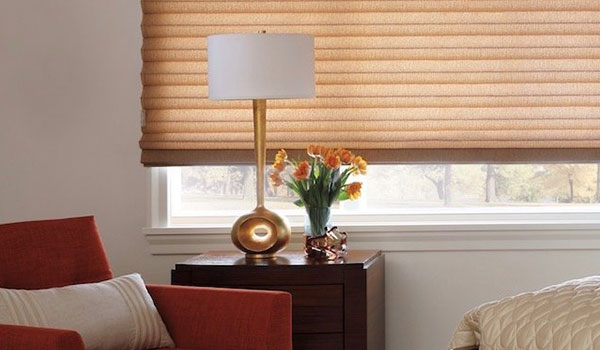
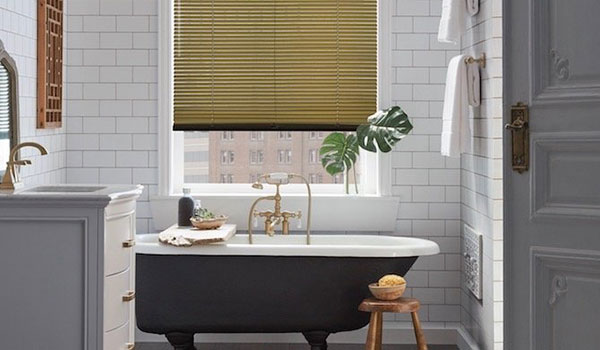
Brass is an alloy of copper and zinc, which makes it very strong, and it won’t rust! The actual color of brass is similar to gold, so brass used in non-metallic surfaces such as fabrics often looks the same as gold.
Think about using brass for:
– Light fixtures and lamps
– Picture and mirror frames
– Plumbing fixtures and drawer handles
– The backsplash for a bar, bookshelf or kitchen counter
– Occasional tables
– Urns and vases
– Trays and chargers
– Drapery rods
– Even a brass bed
Brass pairs well with lots of colors, including cream, white, gray, forest green, Indian red, and almost any shade of blue. Brass even goes well with other metals, including copper, chrome, stainless steel and nickel.
Add brass to your décor this season. It’s a showy addition that will bring warmth to your home environment.
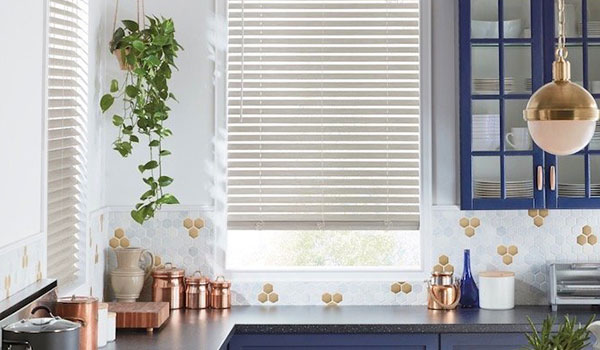
The Color Lime
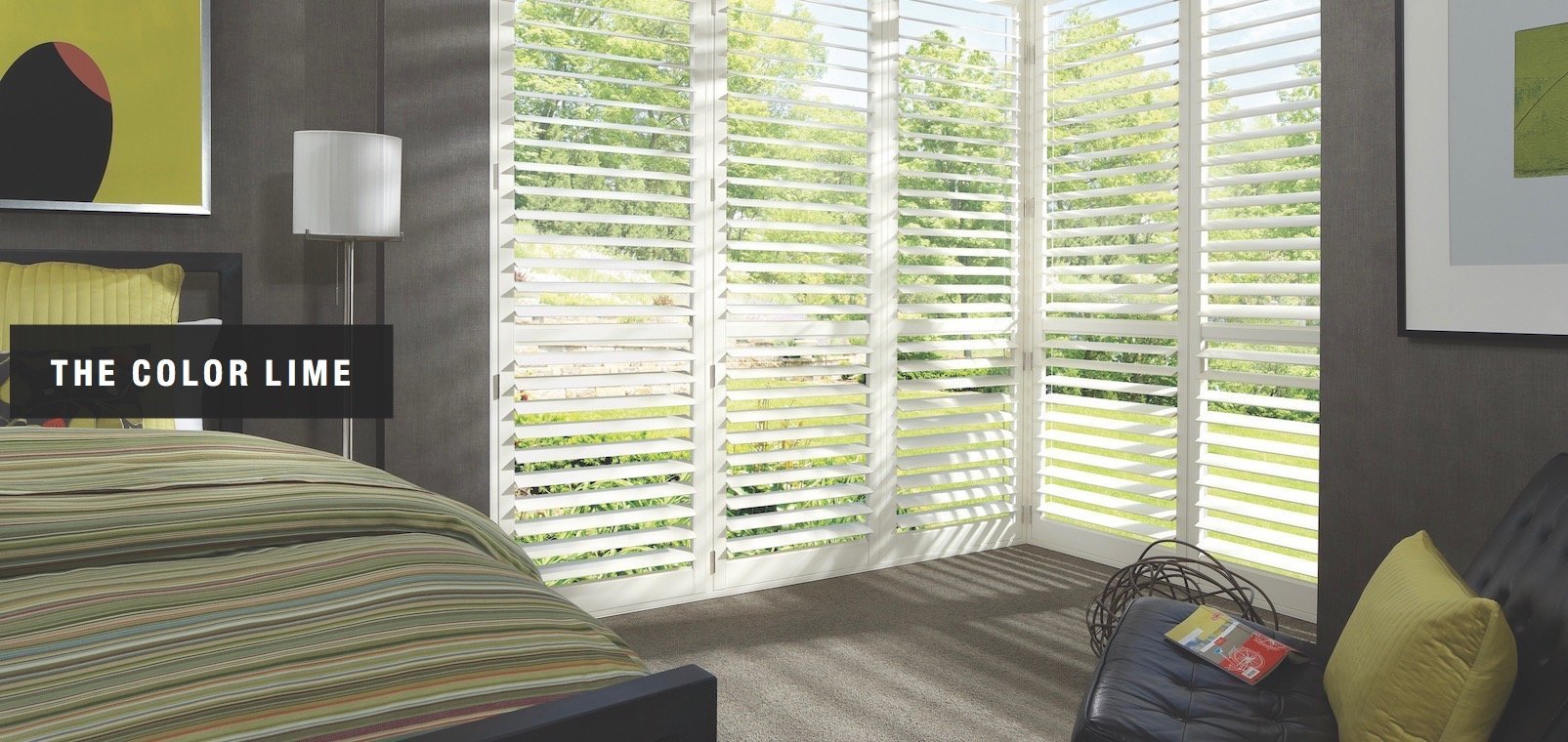
The color lime can add tang to your home décor
Lime green is a bold, extroverted color. It’s a color from nature, yet it is brighter than many earthy hues we tend to use for home décor. Versions of the color lime green can also be called chartreuse, jade, apple green, and spring green.
Given lime green’s drama and intensity, it's surprising that the hue works beautifully with many color palettes. Sometimes lime is toned down by adding grey and beige tones; other times the color is bold and brilliant – and very attention-getting. Depending which version of lime you select, you can create various moods from subtle to edgy and from calming to energizing.
Lime can be used for all types of décor, including traditional, modern and everything in between. Colors that work well with lime really depend on the shade of lime you select.
In general, this vibrant color goes well with:
– White, gray, and neutral beige and cream tones
– Brown, camel and taupe
– Pink, purple, red and salmon
– Small touches of blue, black, orange or yellow
Do beware, when using lime green, about mixing other shades of green - the result may be chaotic and unharmonious. If you choose to decorate with lime, it’s usually best not to use other greens in your design plan.
Add a sweet and pungent slice of lime green to your décor. It will kick up your home environment.
Built-in seating
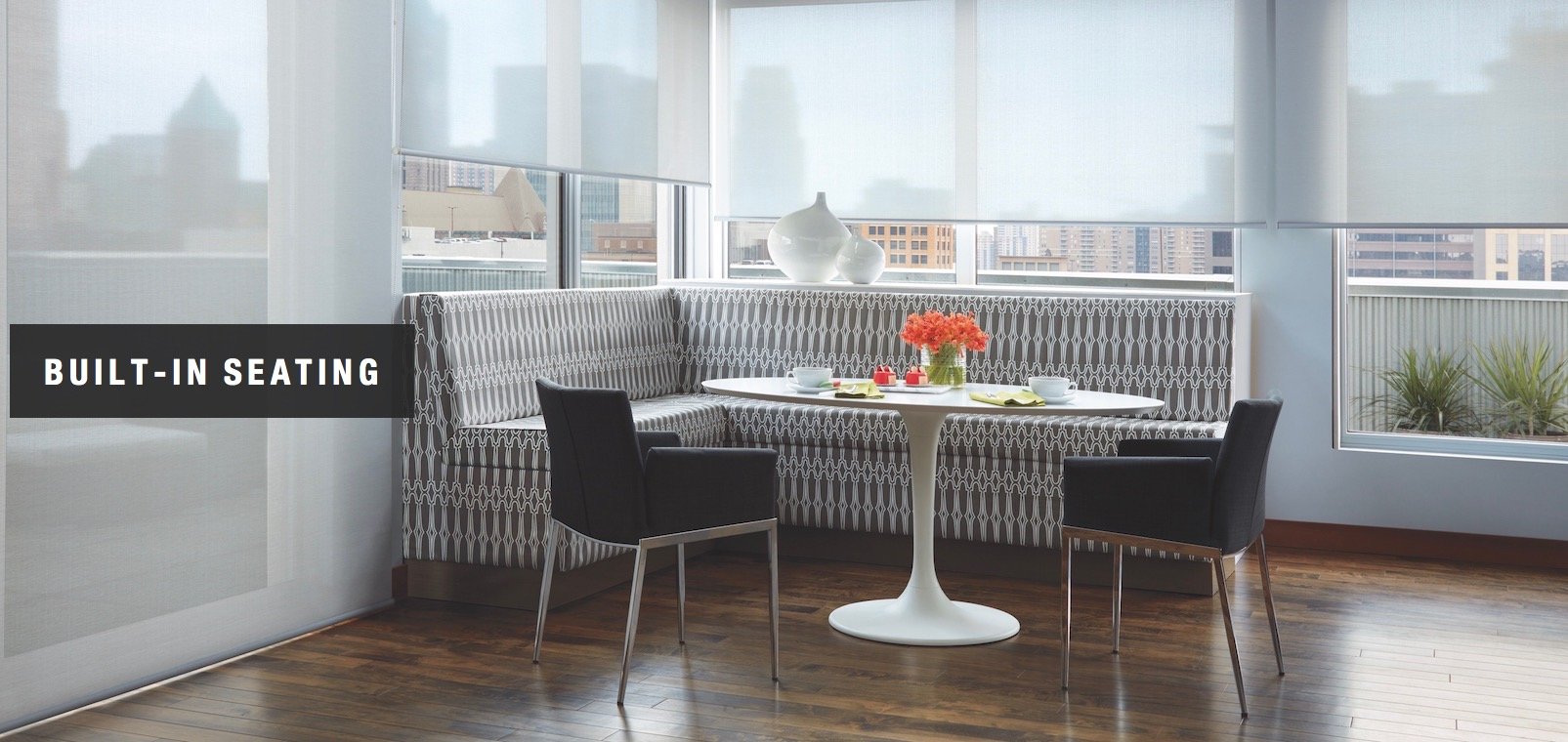
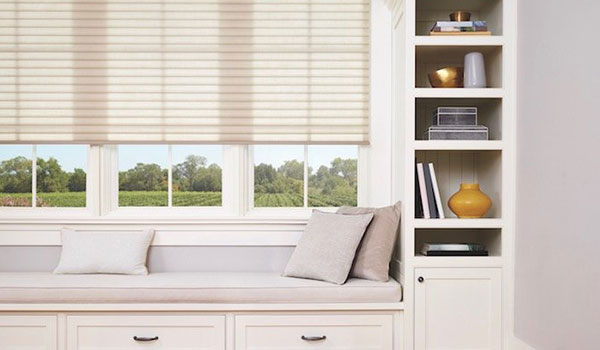
Built-in seating adds beauty and function.
Built-in seating feels cozy and inviting – and it can be very versatile, providing not just an additional place to sit, but additional display space or even storage underneath. It can maximize space in a tight area or create a new casual place to read, have a meal, chat, or just look out the window.
Built-in seating can be manufactured to complement almost any building style. It can be upholstered or not; it can have simple and straight lines or lots of detail; it can have seat backs or not; it can have closed shelving inside, open shelving or no storage at all.
Best of all, built-in seating can go almost anywhere in your home:
– Most popular, in a breakfast room or kitchen, for added places at the casual family dining table
– In the window of a bedroom or living room, to create a lovely place to daydream and view the outdoors
– In the den or home office, for a quiet space to talk on the phone, answer emails or respond to texts
– In the foyer, to put on shoes and socks, and drop off your stuff when you come in the door, but do watch for clutter!
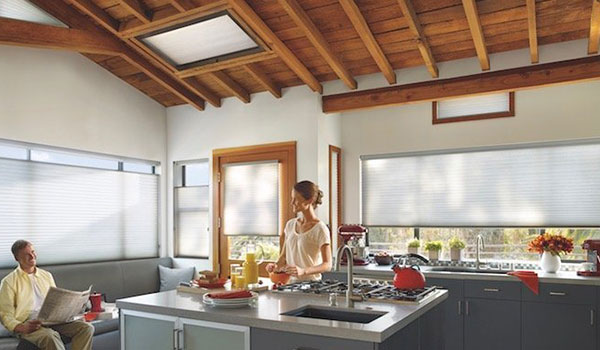
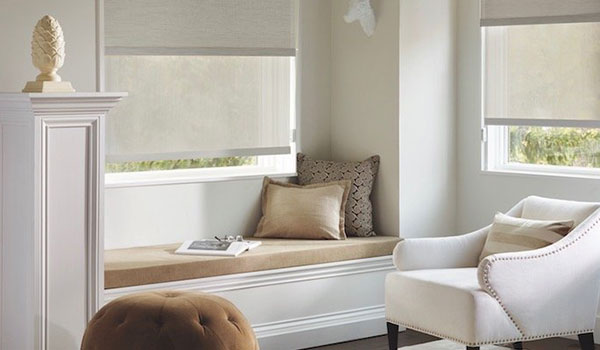
Built-in seating can also be a creative way to finish a room that looks a bit incomplete. It beautifully fills up an awkward space in a corner or completes a room plan near a window.
Complementary Colors
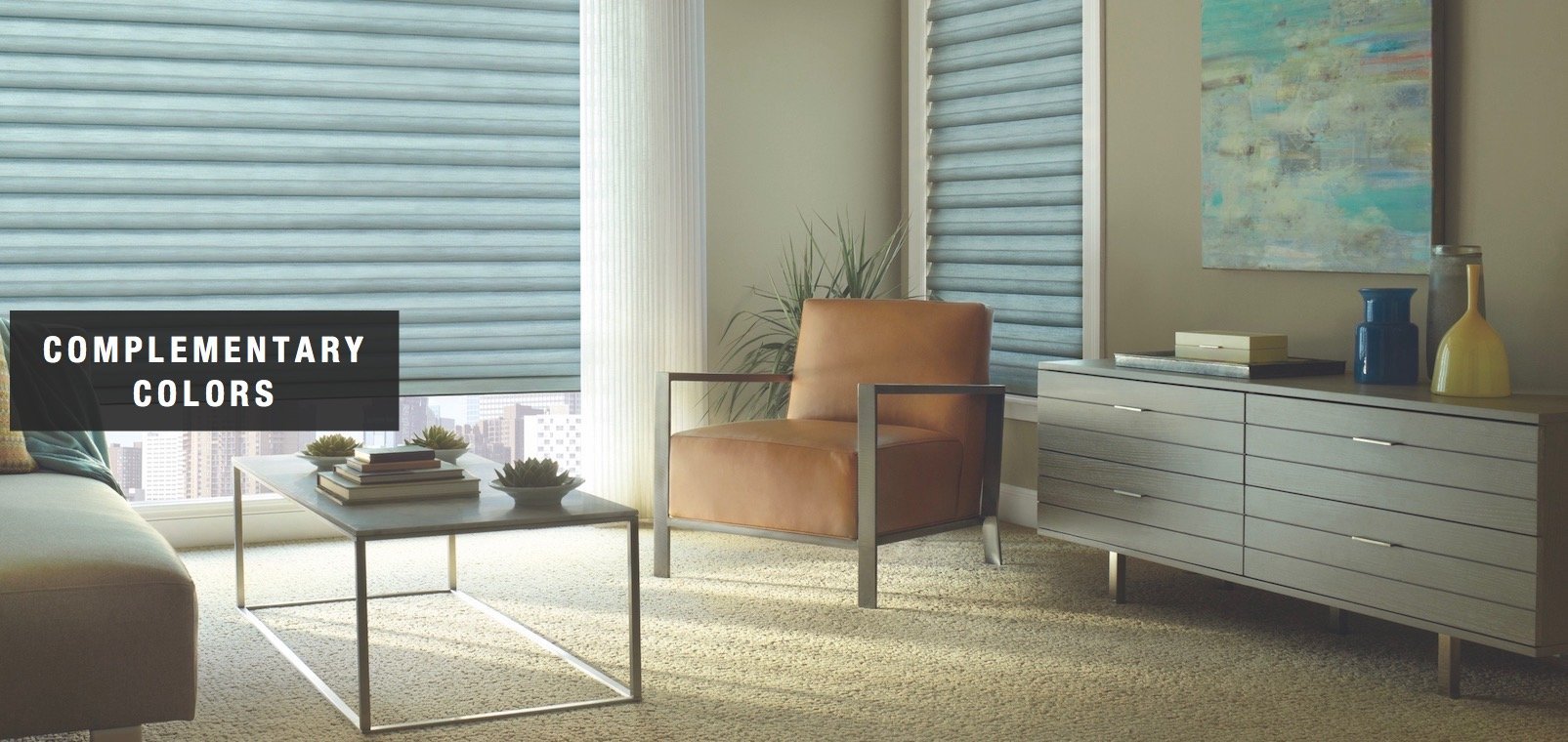
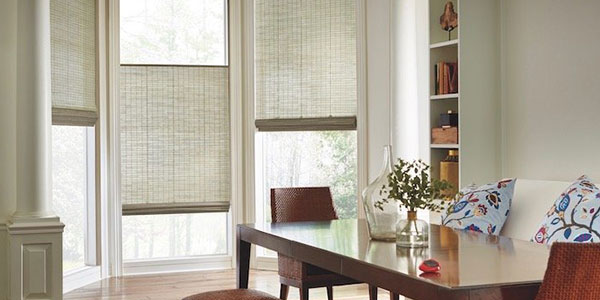
Complementary colors create harmony and a sense of calm.
The old adage that opposites attract is often true, especially in selecting the colors for decorating your home. Opposite colors - also known as complementary colors - add energy to a room, yet at the same time, they make us feel comfortable and complete.
Complementary colors are the shades that are opposite on a color wheel:
– Reds and greens
– Shades of orange and blue
– Hues of purple and yellow
Nature is full of complementary colors, such as dramatic red roses on stems with bright green leaves, delicate pansies with their purple and yellow color combination, and bright blue sky and sea positioned near golden sand.
For a more modern take on complementary colors, you can use shades that are not exactly across the color wheel, or you can be a bit creative with the complementary color concept.
Think about innovative hues such as tangerine and turquoise, fuchsia and lemon, sky blue and terra cotta, pink grapefruit and acid green, burnt orange and sage green, or soft aqua blue and tomato red.
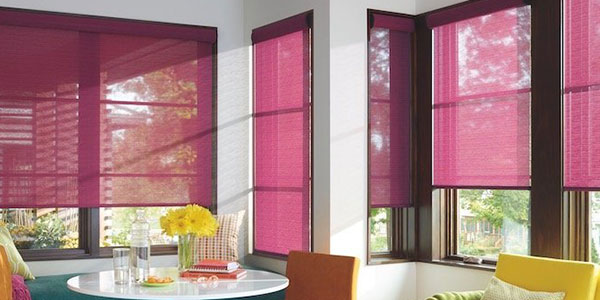
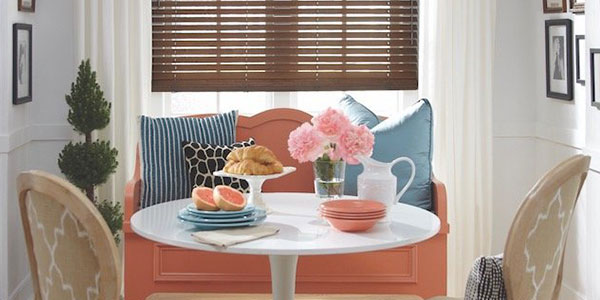
If you feel cautious about adding complementary colors, start small with elements like a painted wall, a painted bench, sofa pillows, throws, flower arrangements, or slip covers. Then, as you become more confident, you can ratchet up your color scheme with larger and more permanent items like upholstery fabrics and window fashions.
Balance your interior design plans beautifully by selecting complementary colors.
Decorating with Red
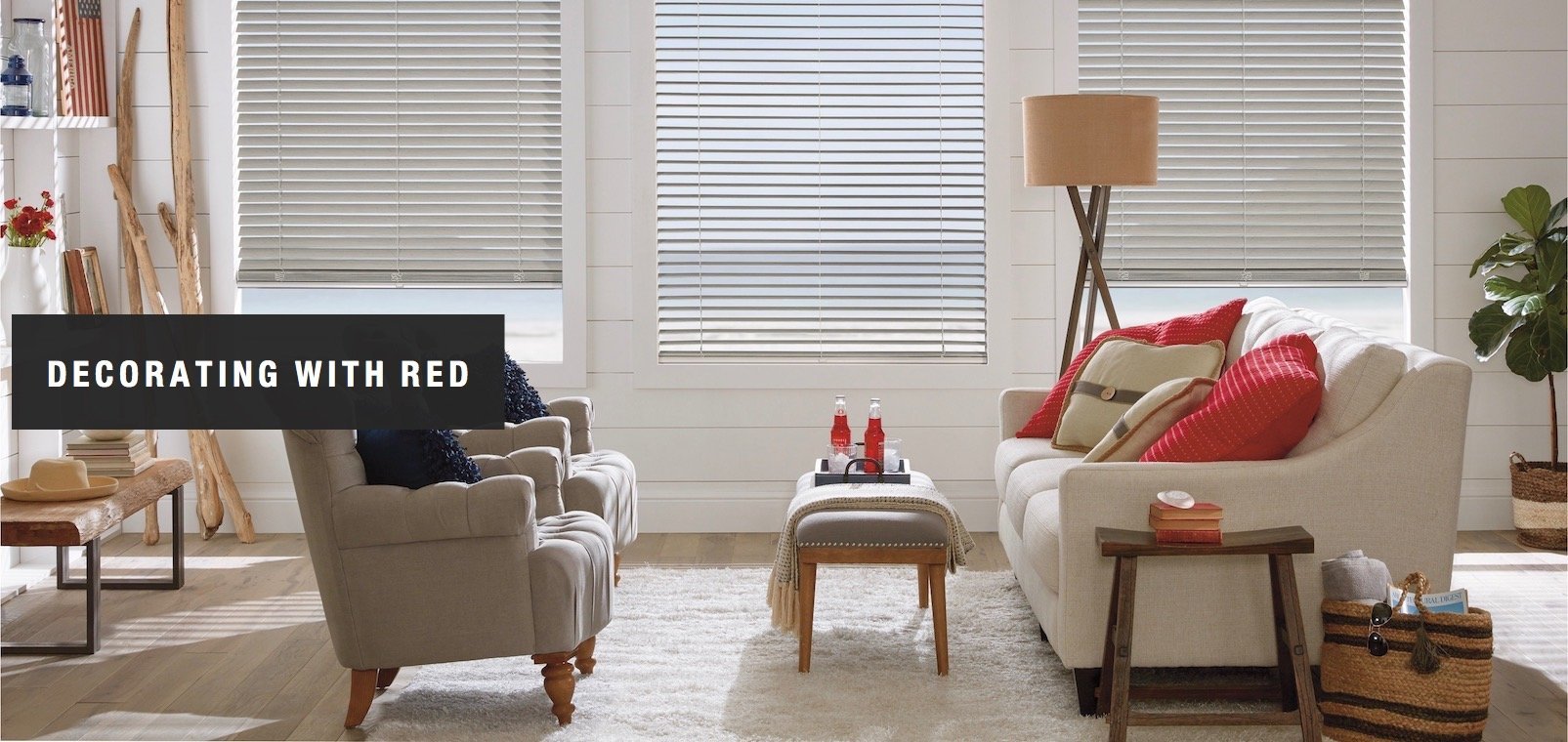
The intensity of the color red adds passion to your interior look!
Because of its richness, red can create a focal point in your rooms, even when used in small quantities.
Red comes in so many shades and is described by so many names, including cardinal, scarlet, crimson, cherry, ruby, garnet, claret and more. Many monikers for red reflect how exotic the color can appear; they’re named for parts of the world, such as Chinese Red, Venetian Red and Morocco Red.
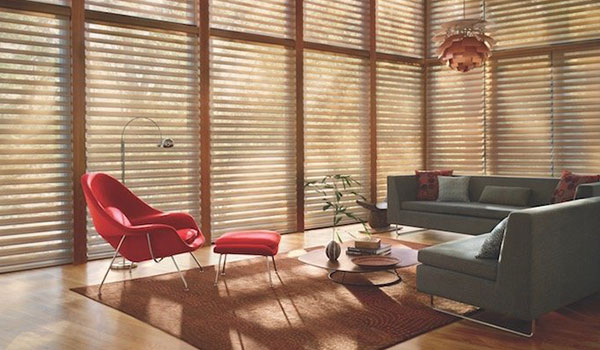
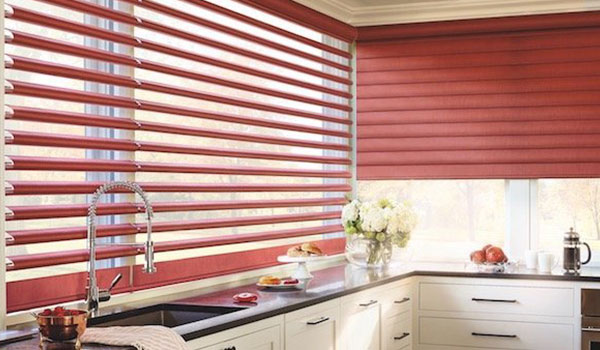
Red is known as a color of passion; it also communicates love and beauty. Depending on your frame of mind and your culture, it can also be identified with energy, happiness, loyalty, luck and more.
Whatever red “says” to you individually, it’s clear that it makes a memorable fashion statement that adds personality to your home décor. It’s a refreshing change from the neutrals that most of us rely on in our home design plans.
Red is a dynamic addition to most interior design color schemes, and, do beware, a little bit can go a long way.
Add just a dash of brilliant red in the following home elements:
– Carpeting and rugs
– Painted furniture
– Fabrics, in solids or patterns, for draperies and furniture
– A painted accent wall or built-in shelves
– Bed or table linens
– A sofa, ottoman or easy chair
– Accent pieces, such as lamps, artwork and ceramics
Add decorative elements in this brilliant color. It's a red-hot design choice that will make your friends green with envy!
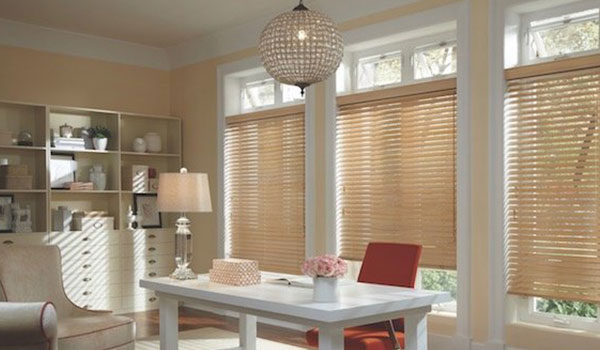
Bathtub Design Ideas
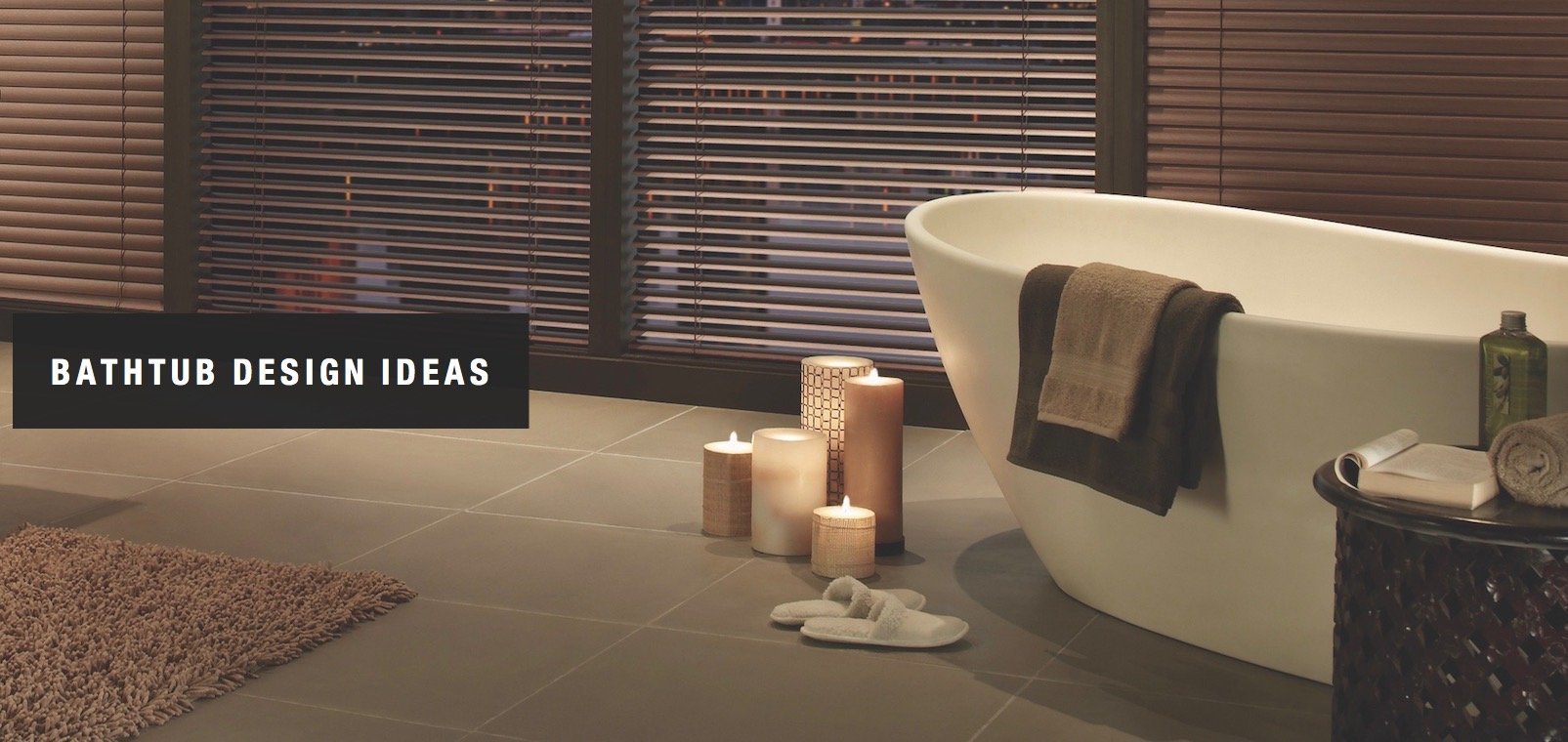
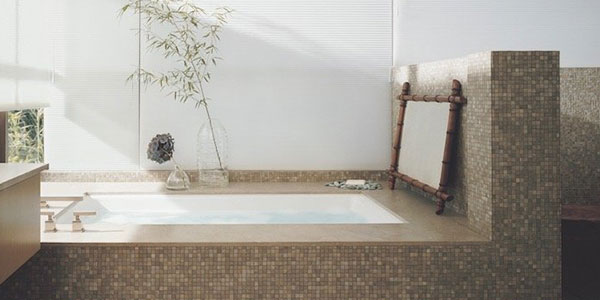
A beautiful bathtub can change the way you think about your bathroom.
Bathtubs mix aesthetics and purpose more than almost any other bathroom element. Many people include a bathtub in their design plans just for the look, but think about how a bathtub can transform your bathroom into a relaxing, stress-relieving retreat where you can have a long soak with candles, music and a soothing beverage.
Be creative as well as practical when selecting a bathtub for your home. You can select from many styles of tubs from the most traditional – even a refinished antique tub! – to the most contemporary, and everything in between. And you’ll want to focus on the fixtures, which come in a variety of beautiful styles and finishes.
Functionality plays a part in your selection process too. Does someone in your home have mobility issues, needing help to get in and out of the tub? Does your tub also need to function as a shower? Would you like a whirlpool feature to soothe aching muscles or arthritic joints?
In terms of beauty, bathtubs give you a unique opportunity to mix surfaces – porcelain, metal, stone, tile, wood and more. Tubs can be freestanding or have a surround of various materials. And plan for plenty of towel racks so towels are convenient to access and dry quickly.
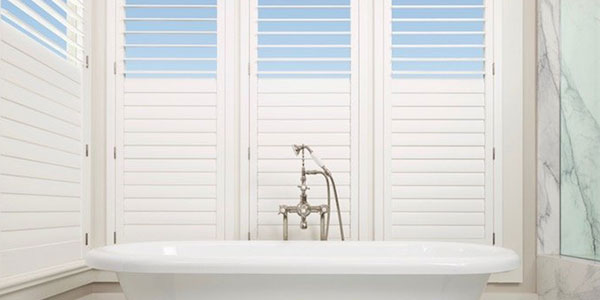
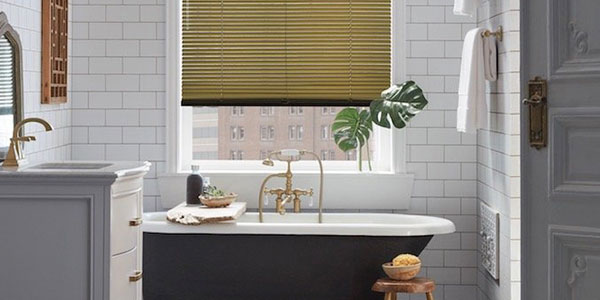
As far as additions to your bathtub design:
– Position a tray across your bathtub to hold your soap, loofah, a book and a beverage.
– Display potted plants around the tub; many of them like the moisture.
– Add warmers in towel bars and under the floor.
Enhance your relationship with your bathroom with a fabulous new tub!
DINING ROOM STORAGE
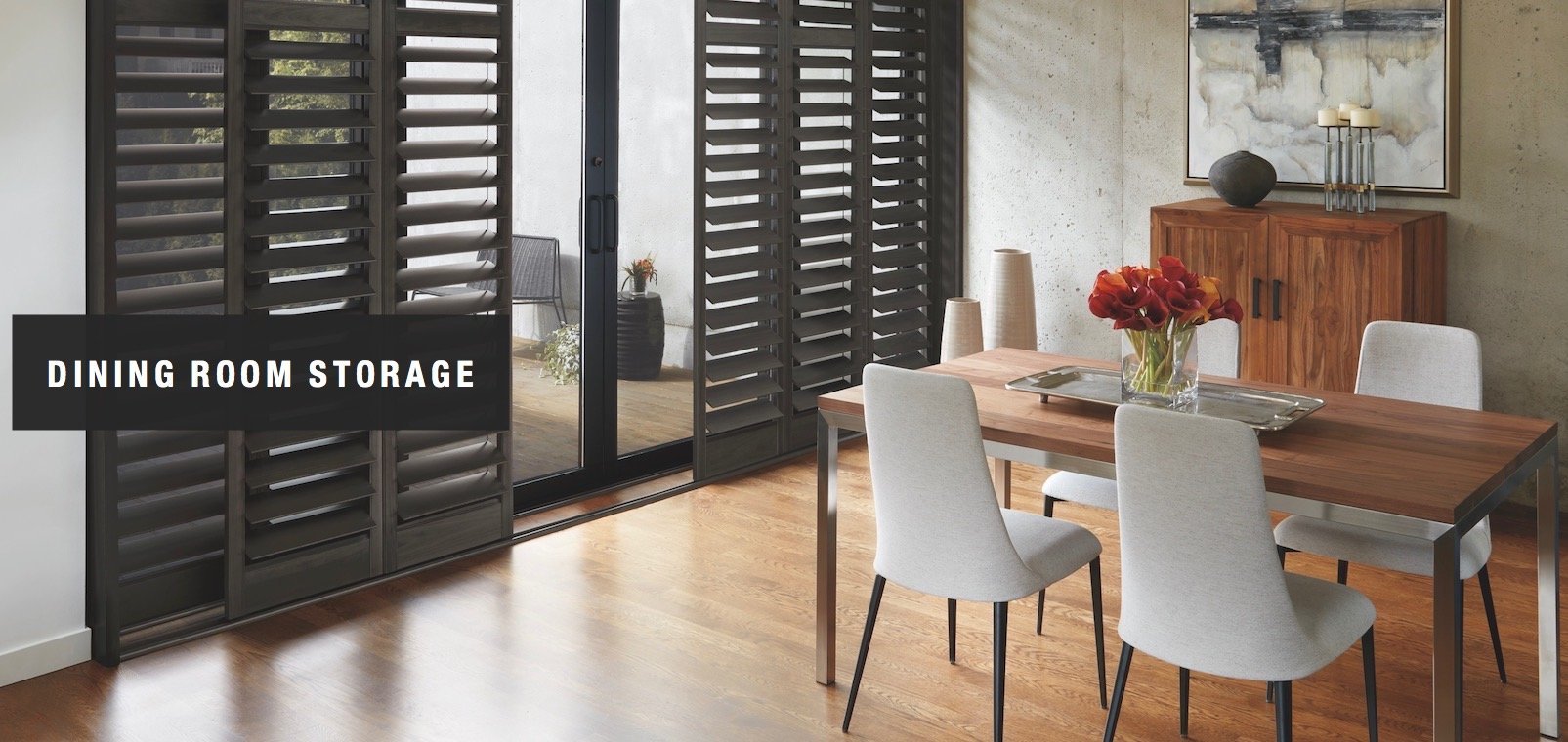
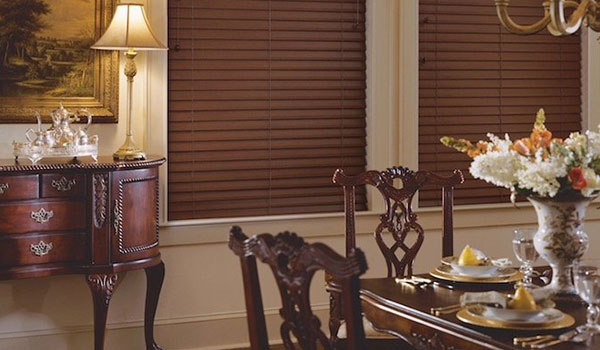
Add a storage solution to your dining room, and go from clutter to clean.
Dining room storage furniture has many names, depending on its design, what part of the country you live in and the style of your home, including sideboard, china cabinet, hutch, buffet, breakfront and baker’s rack.
A dining room storage solution is both functional and beautiful. It’s a place to keep needed dining room elements, such as flatware, table linens, china, serving dishes, liquor, candles and more. At the same time, a storage solution can display your most beautiful dining objects. And, as far as practicality is concerned, you can actually use it as a serving place for drinks and appetizers, coffee and dessert, or a whole buffet meal!
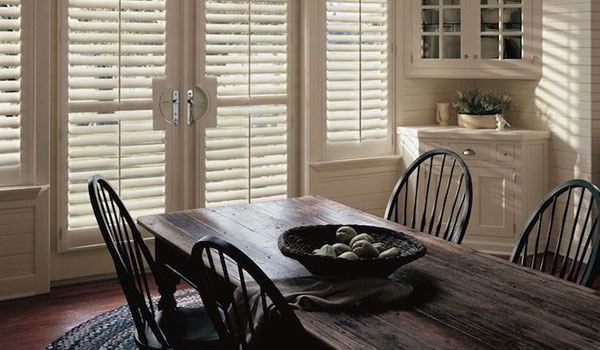
A major choice is whether your storage should have open or closed storage or glass fronts to protect items but still keep them on display. Many options include both open and closed storage areas so you can display your most beautiful china, glassware and serving pieces, and, at the same time, hide the less-display worthy pieces!
Some storage solutions are built-in, which can help make a small dining area appear larger. And sometimes storage is disguised and tucked away under a window seat. Think about adding shallow wall-mounted shelves where you can display serving platters and glassware.
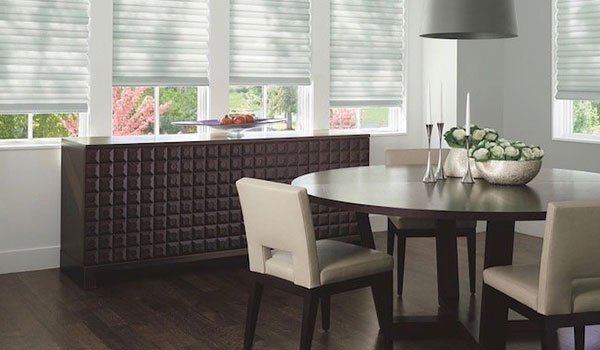
Dining room storage solutions come in all sizes, finishes, shapes and styles: old or new, traditional or modern, or anything in between. Popular styles include Victorian, craftsman, French provincial, mid century modern and industrial style. You can even repurpose a dresser or armoire meant for the bedroom.
Clear the clutter from your dining room and, at the same time, make your dining room more beautiful by adding a storage solution!
DECORATING WITH WHITE
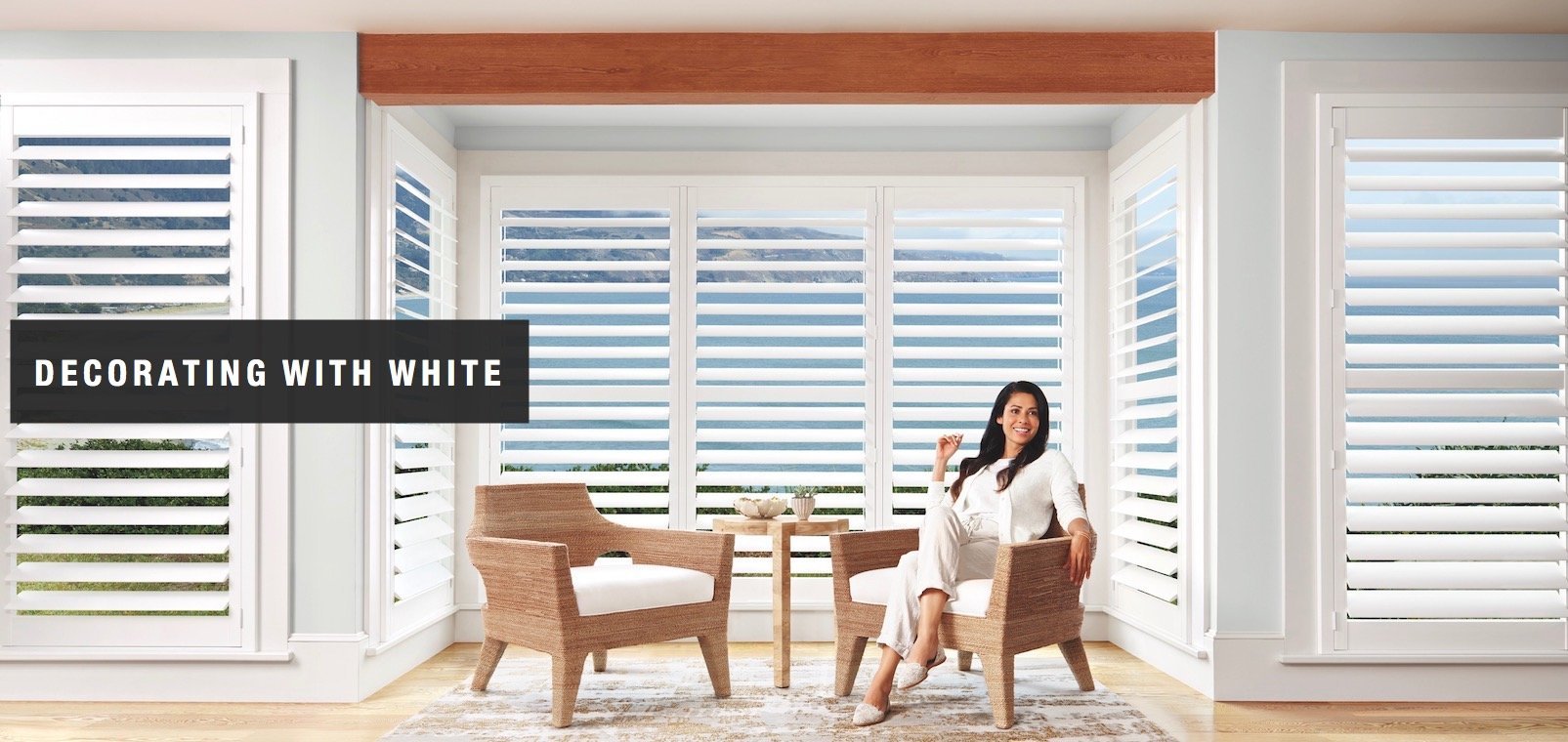
White is a clear, clean choice for summer decorating.
White, used as an accent color or the primary neutral in a room, will help your house look and feel bright, airy and cool. It’s perfect for hot summer days and evenings, yet lasts throughout the year, lightening a room on dark winter days.
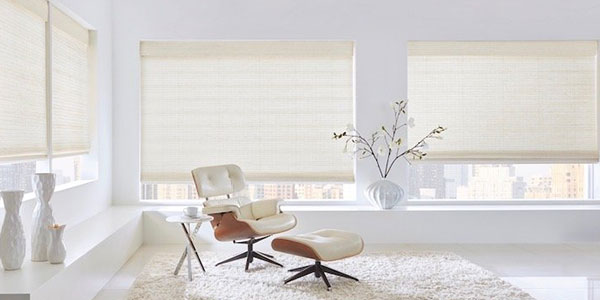
Even though “white” seems like one color, the shade actually comes in many different versions. Warm white hues are often used to enhance elegant home designs, while cooler tones work well in contemporary or modern rooms. White can calm your rooms or make them more energetic depending on the shade of white you select and the colors you use around it.
Almost any interior design elements look beautiful in white, including:
– Paint on walls and moldings
– Upholstery and drapery fabric
– Floor coverings, including rugs, carpets and hard surfaces
– Tile backsplashes, showers, walls and countertops
– Window treatments
– Table and bed linens
– Accessories
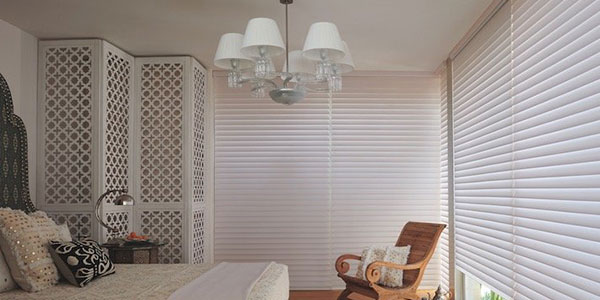
You can decorate a room almost all in white without it appearing bland, boring or stark. The key is using a variety of textures – rough and smooth finishes, soft and hard qualities, and matte and glossy surfaces.
Also consider adding colors to enhance your white decor:
– White is stunning when used with black.
– White is warmed up when joined with dark, rich colors like chocolate brown, deep blue or gray.
– White is serene when paired with other neutrals, such as cream, taupe, tan and light gray.
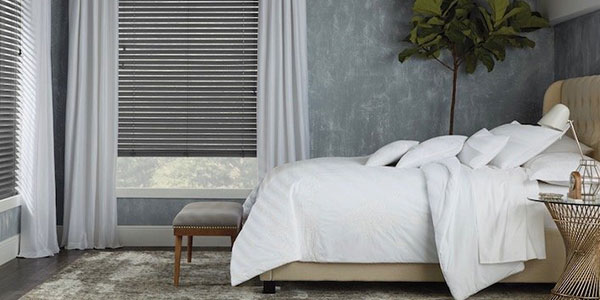
– White can be combined with almost any other color palette, including shades of blue, green, pink, red or gold.
Add white to your décor for a clean, clear look that works all year round.
BOOKS AS DESIGN ELEMENTS
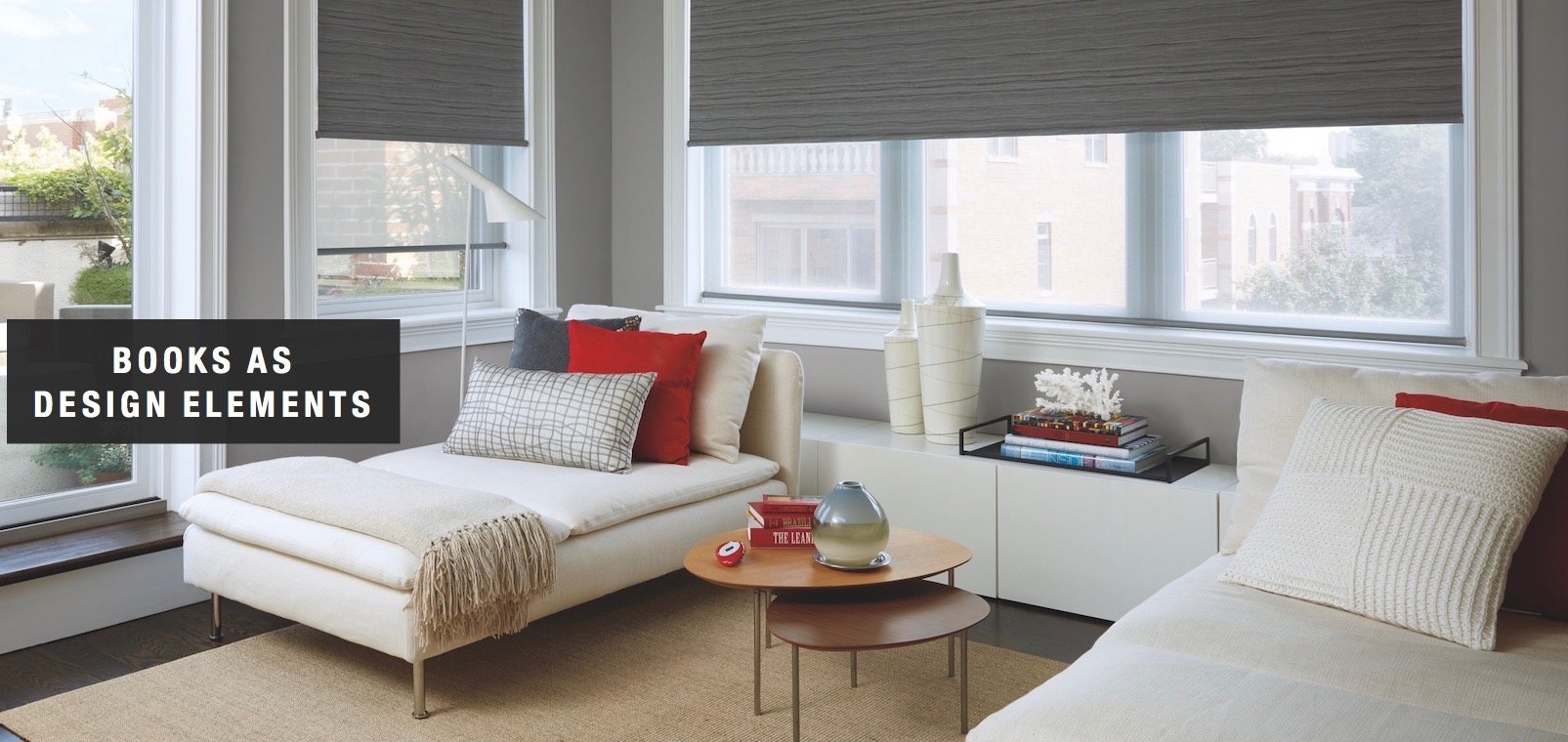
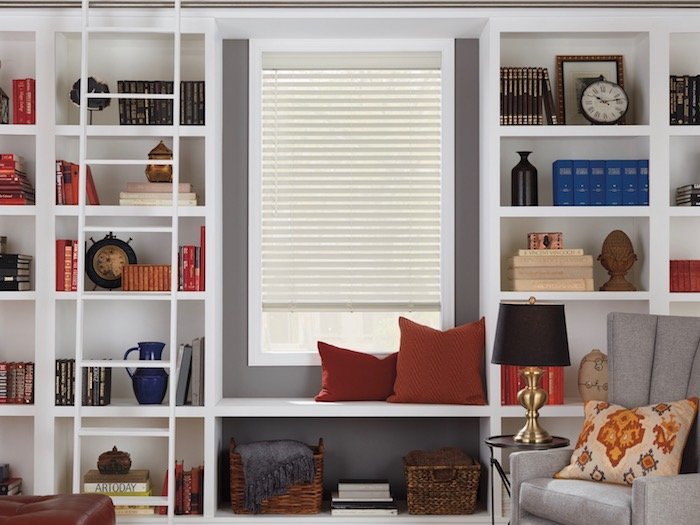
Decorating with books can make your interior look smarter
For the most part, we think of books as volumes to read! Books can also be the perfect finishing touch for an interior design plan.
Books add color, texture and scale. Most of all, they create a point of interest and conversation for your guests.
Typically we think of books displayed in a home office or library, but they can be used as a decorating element in almost any room. You can sort them by color, size, topic and more. The choice is yours.
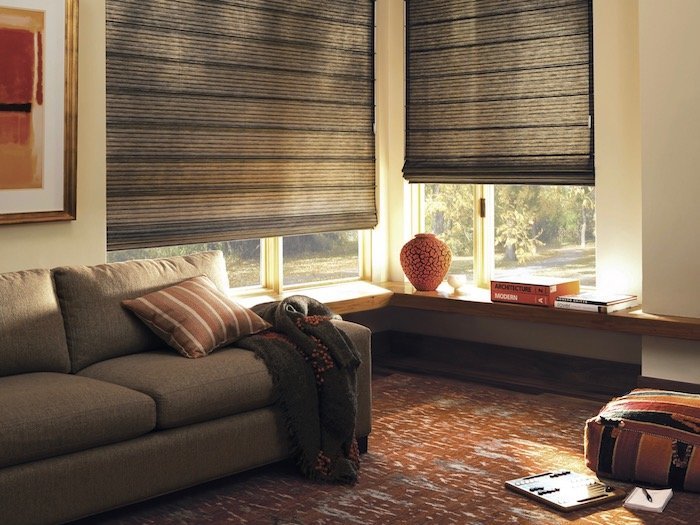
A variety of book placements can enhance your interior design:
– Beautiful coffee table books can be exhibited in your living room or great room.
– A collection of books with the same theme - or the same color - can be arranged on shelves.
– Your favorite books, regardless of the color or topic, can be randomly displayed.
– Large books can be stacked on the floor to create a unique occasional table.
– A selection of valuable first editions autographed by the authors can be displayed inside glass cases for their protection.
– Several books can be stacked on a table, as a base for a flower arrangement or decorative accessory.
– Cookbooks can be displayed in a kitchen or breakfast nook.
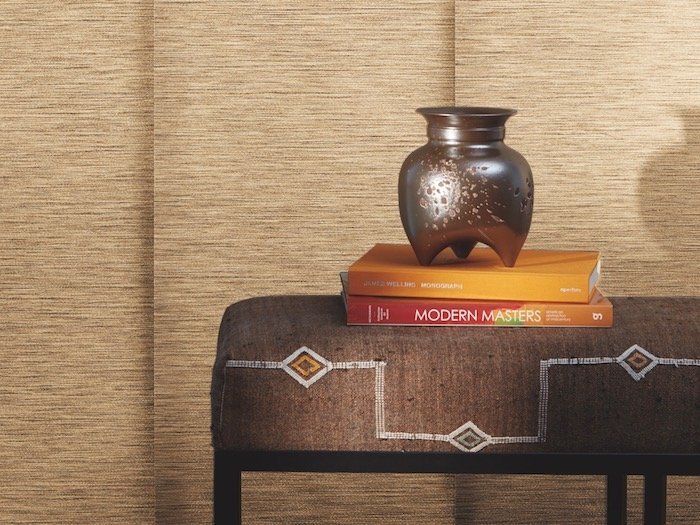
Most people display books they have read – or plan to read. Other people – and some interior designers – buy selections of books primarily for display.
Think about decorating with books that reflect your own interests, such as: Home and Garden, Art, Travel, Sailing, Sports, Fashion, History and Nature.
Add some books to your décor this season. It’s a clever idea!
Decorative Moldings
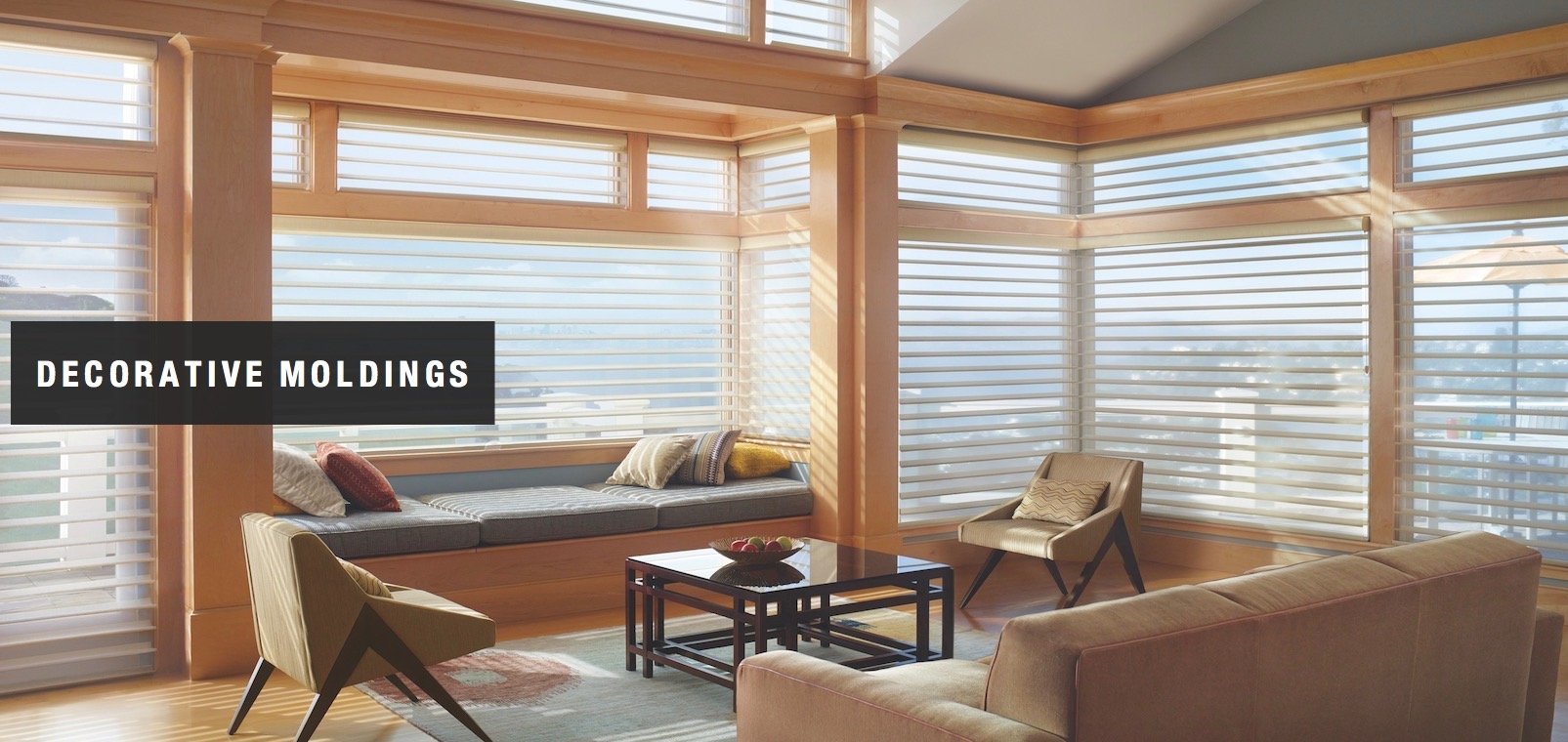
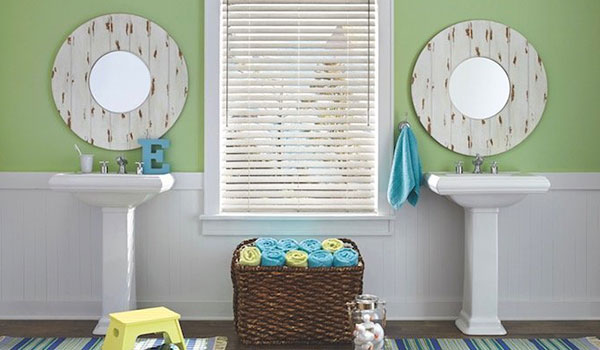
Frame your home design plan with decorative moldings
Decorative moldings on walls, windows, doors, and ceilings add texture and interest to your home, no matter what your design style.
Moldings come in so many shapes, sizes and finishes. They can consist of one simple layer or several stacked layers to add embellishment. Traditionally moldings have been made of wood, but today they’re often constructed from materials that look like wood, but are more durable and budget friendly.
Molding usually works best when it complements the design of your home; for example, a Victorian home may have heavily ornamented moldings, while a modern home has squared, simple moldings or no moldings at all.
We tend to think of moldings in white or off-white colors, with walls painted a different shade. However, light colored walls with dark molding can be a dramatic choice too! Just consider your options:
Windows:
– Casing around the entire window frame
– An apron on the bottom
– A pediment on the top
– A decorative or fluted design on the sides
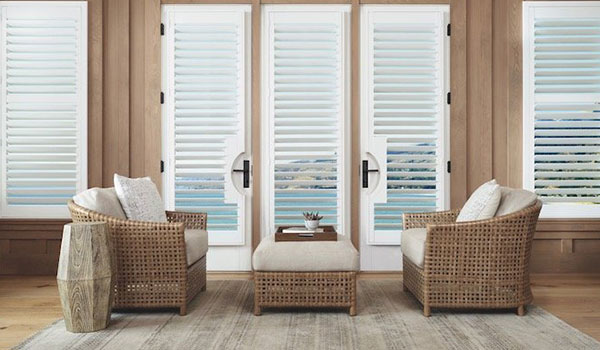
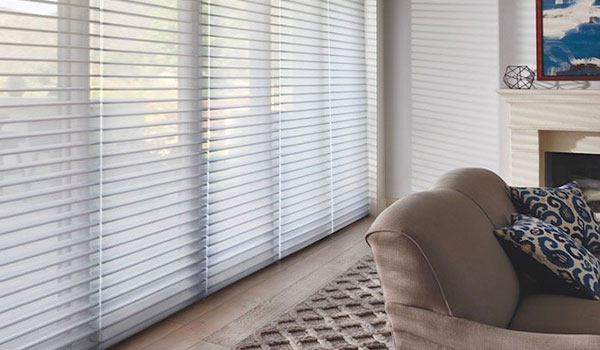
Doors (both exterior and interior):
– Casing around the sides and/or tops
– Raised paneling on the door itself
Walls:
– Baseboards at floor level
– Crown molding at ceiling level
– Raised paneling, possibly with wallcoverings or mirrors in insets
– Wainscoting and picture rails, with the choice of different paints or wallcoverings above and below
– Paneling around a fireplace or built-in shelving
– Wall paneling behind a bed instead of a headboard
– Stepped paneling going up a stairway
Ceilings:
– Around chandeliers in the dining room or foyer

